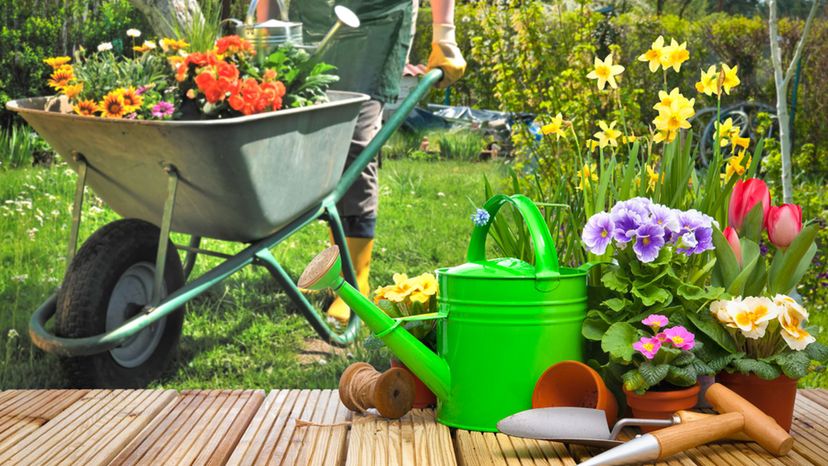
About This Quiz
Are you obsessed with your garden? Do you plant your own vegetables and herbs to enjoy at your family's dinner table? There is so much to learn when it comes to gardening, and this quiz will separate the green-thumbed from the black-thumbed.The tomato is definitely not going to spring up in your garden during the winter. But you can harvest some kale!
The vernal equinox. or spring solstice, is what springs spring. It is prompted by the warming of the earth.
Seeds can remain dormant in the earth for years. That's why it makes sense when a seed plant pops out of nowhere.
Advertisement
Daffodils are planted as dormant bulbs in the early fall. When you follow this schedule you should have beautiful flowers by spring.
Camellias are not blue. But it would be pretty cool if they were.
There are many plants that can be turned into microgreens, but rosemary is not one of them.
Advertisement
Spinach is an annual, and that means it completes its life cycle within one year. Don't worry, you can still find it in your supermarket year-round.
The blooming magnolia tree is a harbinger of spring. Its blossoms are a hallmark of the season.
It takes beets about 90 days to reach their full size. Some things are worth the wait.
Advertisement
Tulip fire is the disease that will kill your tulips. Thank goodness there is no such thing as tulip cancer.
Tulips have some of the best names and there are countless types, but Red Herring is not one of them.
It usually takes asparagus a whole three years to produce its first crop. After that, it doesn't require as much patience.
Advertisement
The flowering cherry is a deciduous tree, meaning that it sheds its leaves once a year.
The pea plant is a climber. That's why when you plant it, it's smart to give it something to climb on, such as a trellis.
There are literally thousands of types of rhododendrons. They come in many shades, including pink, white, and purple.
Advertisement
Syringa is the botanical name, but lilac sounds prettier.
The carrot fly wants to eat your carrots. Even dangerous rabbits will not do as much damage to your crop.
The early part of spring is a vulnerable time. It's best to cover seedlings with a frost blanket at night, but be sure to remove it during the day.
Advertisement
Snail pellets will help to keep the snails at bay. These can be bought at your local gardening store.
Squash is a member of the cucurbit or squash family, silly.
Sod is an instant roll-out lawn. There is a great debate about the use of sod vs. seed.
Advertisement
The berries grow best when straw is used as a mulch around them. Hence, they're called strawberries.
A cloche is a small translucent cover for protecting or forcing outdoor plants. These days you'll find decorative cloches for interior design.
Summer is when the most flowers and plants are in bloom, and thus, it is the most colorful time. It looks pretty great when you've been drinking, too.
Advertisement
Alliums are those ethereal lollipop-shaped blooms that you find your garden. And yes, they are the flowers of onions.
Geraniums are otherwise known as cranesbills. There are approximately 422 species of the flower.
They could probably manage it, but it's best to give your climbing plants something to hold onto.
Advertisement
Most culinary herbs that we use today come from the Mediterranean. This is thanks to the ideal temperature and habitat.
Turnips can be harvested 30 to 60 days after planting. It's easy to be patient, because who craves a turnip?
Deadheading encourages the flower to bloom again. It pains you to have to do it, but it benefits you in the end.
Advertisement
Roses all enjoy the same conditions. They are a perennial flowering plant with over a hundred species, and most species are native to Asia.
Zucchini flowers are not only edible, but they're delectable when baked or fried. But then again, what isn't?
There are raspberries that fruit in the summer, and those that fruit in the fall. If you're a raspberry-lover, spring and winter are tough times.
Advertisement
There are so many different kinds of lilies, in a variety of colors. Unfortunately, there are no bell-tower lilies.